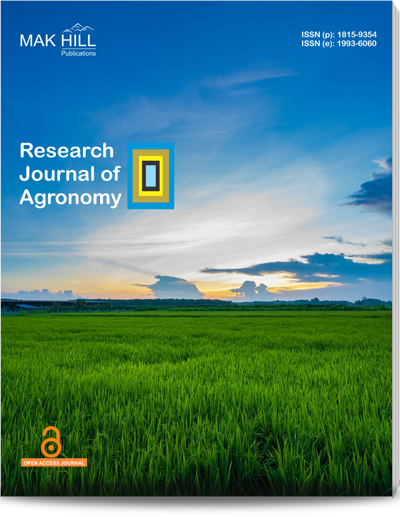
Research Journal of Agronomy
ISSN: Online 1993-6060ISSN: Print 1815-9354
Abstract
Transportation and storage of poultry broiler litter during the winter months is critical to implementing comprehensive nutrient/waste management plans, but acceptable temporary storage near the site of spreading can be difficult to arrange. Alternative, less expensive methods for temporary storage are needed to encourage more use of poultry litter on cropland, but these methods must be environmentally sound. Two separate studies were initiated to examine alternative methods of litter storage. Treatments included: No litter, litter covered with 6-mil polyethylene plastic, litter covered with commercially available HayGard® fabric, an uncovered pile, an uncovered, cone-shaped pile and an uncovered pile treated with a Polyacrylamide (PAM) to prevent water infiltration. Factors studied included litter quality and nutrient runoff. In both studies, the uncovered piles absorbed rainfall but also dried out on the surface rather rapidly in the spring. They also resulted in much higher runoff of ammonium-N, both total and soluble P and all other measured runoff parameters. Covered litter was wet on the surface from condensation under the cover, but generally resulted in less runoff of nutrients and maintained its fertilizer nutrient concentration. Exposed litter rapidly decomposed due to the wetting and drying effect. All litter apparently lost some mass although this was observed and not measured. Results indicate that dry broiler litter must be covered in order to protect litter quality and to prevent extensive nutrient runoff.
How to cite this article:
C.C. Mitchell , H.A. Torbert , T.S. Kornecki and T.W. Tyson . Temporary Storage of Poultry Broiler Litter.
DOI: https://doi.org/10.36478/rjagr.2007.129.137
URL: https://www.makhillpublications.co/view-article/1815-9354/rjagr.2007.129.137